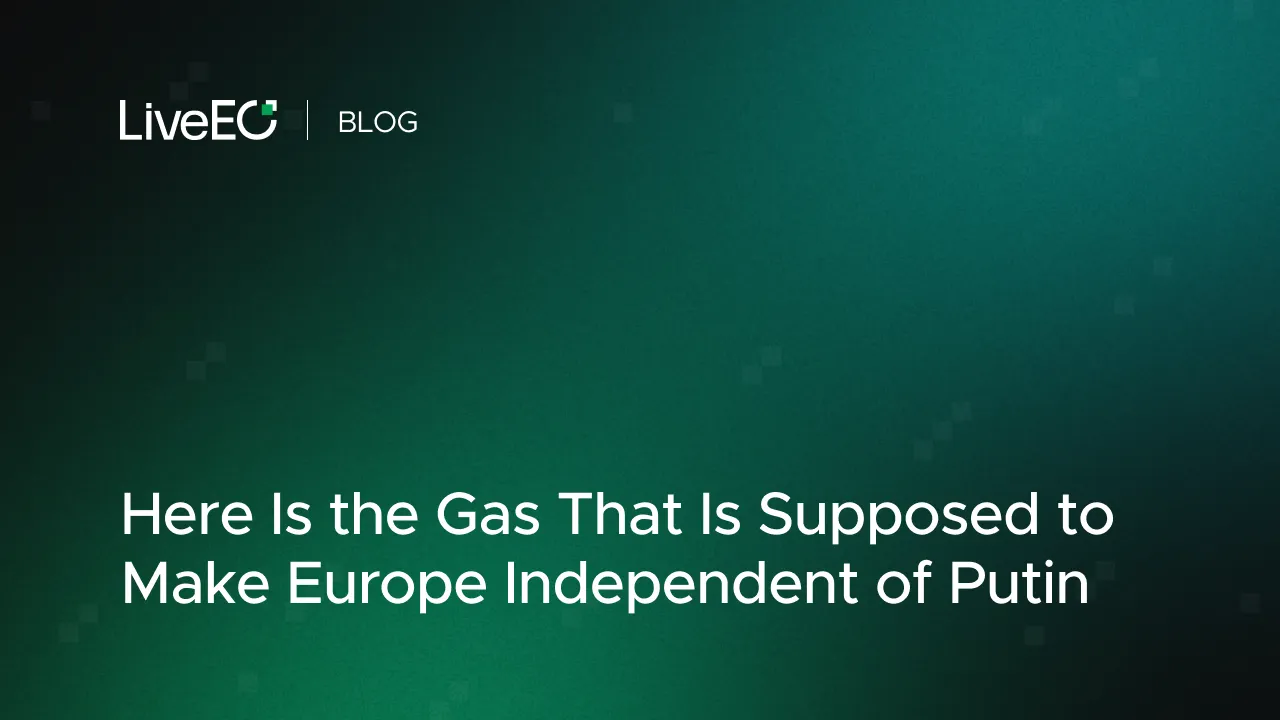Germany is desperately seeking suppliers of liquefied natural gas. As the world’s largest LNG exporter, the USA is an obvious partner. Exclusive satellite images show the massive expansion of the industry not only in Texas.
“Economy from above” is a collaboration between WirtschaftsWoche and LiveEO. This is a translation of the original article written in German by “Jannik Deters“. Access the original article here.
Donald Trump was right: Europe would become “a very, very big buyer” of American liquefied natural gas (LNG), he announced as U.S. president back in 2018 after a deal with then-EU Commission chief Jean-Claude Juncker. Many attempts to sell Europe even more LNG, and four years later, Germany and the EU are now dependent on the US. Russia’s war against Ukraine is forcing Europeans to tap energy sources elsewhere. And latest satellite images from LiveEO now show: The United States has been preparing to replace Russian gas.
The EU wants to reduce gas imports from Russia by two-thirds by 2022. The German Institute for Economic Research even believes that, with the right efforts, Germany could become completely independent of Putin’s gas by the end of the year. But for that to happen, the EU countries need new partnerships like the one between Germany and Qatar, or at least massively expanded ones like the one with the United States.
Since 2016, corporations such as Shell and BP have been extracting gas from American soil in a big way. Between 2020 and 2021 alone, exports increased by 50 percent. Since the completion and expansion of the Sabine Pass and Calcasieu Pass plants, no country in the world now ships more LNG, according to the U.S. Energy Information Administration (EIA). Satellite photos show the expansion of the giant industry in Texas – and the expansion of LNG terminals on the Gulf of Mexico.
Demand has long since exceeded the original planning. The Sabine Pass terminal on the Texas-Louisiana border, for example, which has been in service for around 14 years, has already undergone several expansions, as can be seen in the satellite images. The sixth station, where natural gas is converted into LNG, has just been completed. A total of around 30 million tons of liquefied natural gas now reach the world market from there every year. Converted into cubic meters, this volume alone is equivalent to almost half of Germany’s annual natural gas consumption.
Almost at the same time, the plant at Calcasieu Pass has been completed. In 2018, green meadows and forests still dominated the landscape, the LiveEO images show. In Louisiana, the operators expect an annual production of ten million tons.
Six of the eight export sites in the USA are located on the Gulf of Mexico – in Texas and Louisiana. The energy industry has known for generations that there, and especially in West Texas, there are great riches in the earth. The 220,000 square kilometre basinhad long been economically developed. More than 100 years ago, oil was extracted there for the first time. The raw material transformed small towns such as Odessa or Midland into booming cities. Texas rose to become an economic heavyweight. The landscapes around the cities are now littered with boreholes. From oil, but above all from fracking for LNG. In the past 20 years, the number of fracking plants has increased tenfold.In Germany, the extraction method of fracking is frowned upon among environmentalists and in large parts of the population – although there are versions and methods that harm nature less.
{{inline}}
The satellite images now clearly show the boost this industry has made in the southwestern United States – and what it has left in the ground.
Throughout the area, boreholes are multiplying. This is how the American oil companies are trying to reach the huge oil and gas reserves that geologists have discovered here. Thanks to ever better technology, these raw material deposits are no longer beyond the reach of the extraction industry. New drilling and conveying technology brings the energy sources to the surface more and more efficiently. Fracking has ensured that the production volume in the Permian Basin, which had previously fallen for decades, is now rising again.
One third of LNG exports already go to Europe. Since Trump's time, Washington has been trying to sell even more LNG here. Putin's war is now unexpectedly helping the US achieve a breakthrough in the matter. At the end of March, EU Commission President Ursula von der Leyen and US President Joe Biden announced a deal to supply an additional 15 billion cubic meters of LNG.
The deal helps the EU states – and is highly attractive for Biden's industry. The EU has committed itself to purchasing further, even larger quantities by 2030. In a calculation from the beginning of March this year, the EIA forecasts a 2033 percent increase in exports to Europe by 65. This assessment may still prove conservative in view of the war.
The problem is that gas cannot be brought in as easily and quickly as German Economics Minister Robert Habeck and his colleagues would like to use routes other than those from Russia. Companies cannot simply withdraw from existing supply contracts. In addition, there are logistical difficulties: Germany obtains the gas landed as LNG mainly via pipelines from Rotterdam and Zeebrugge in Belgium. Germany does not have its own terminals to which LNG can reach by ship. Spain and Portugal have many such terminals. They also still have enough capacity to cope with an increase in LNG imports. But there is a lack of onward transport because the capacity of the pipelines is reaching its limits. The cumbersome alternative: The LNG must be imported via Great Britain – and from there via pipelines to Belgium and the Niederlange.







